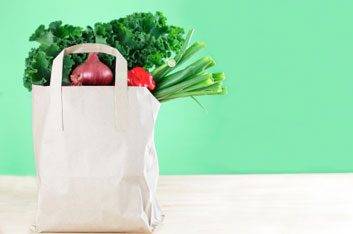
Top of the list
A healthy diet doesn’t happen by itself. To get the recommended amount of vitamins, minerals and other essential nutrients your body depends on, you need a strategy. Our suggestion? Get the most out of your munching by choosing foods with serious nutritional payoff. We talked to Karie Quinn, a registered dietitian in Grande Prairie, Alta., about the top superfoods on her list. Bonus: We’ve ditched the exotic to focus on 10 superfoods easily available-and affordable-in Canada.
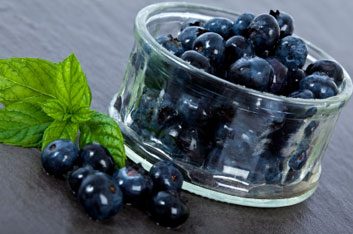
1. Blueberries
Small, dark and beautiful blueberries are a rich source of antioxidants, which repair cell damage and fight heart disease and cancer. Recent research funded by the U.S. National Institutes of Health also shows that anthocyanins, a type of antioxidant found in berries, may offer a protective effect against Parkinson’s disease.
Quinn gives blueberries extra praise for being high in vitamin C, which aids in tissue repair and enhances iron absorption. She suggests adding these tasty berries to cereal, yogurt and pancakes. At lunch, try blueberries in a spinach salad. For dessert, whip up a blueberry cobbler.
Recipes to try:
• Sweet Blueberry Omelette Rolls
• Maritime Blueberry Apple Cobbler
• Grilled Chicken Breasts with Wild Blueberry Grape Sauce
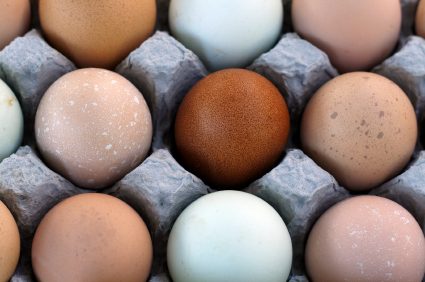
2. Eggs
“Eggs have been picked on,” says Quinn, but only people with very high blood cholesterol need to avoid them. The rest of us should take advantage of their impressive nutritional profile: a whole egg is a complete protein, and the yolks offer vitamin E, lecithin and choline, a nutrient that has been linked to lower rates of breast cancer. Eggs also contain iron; vitamins A, B12, D and E; folate; selenium; and lutein.
There are endless ways to enjoy eggs. Try them boiled, poached or scrambled; in omelettes, wraps and egg-salad sandwiches; and baked into quiches and frittatas.
Recipes to try:
• Huevos Rancheros
• Green Eggs and Ham Sandwich
• Frittata with Asparagus and Scallions
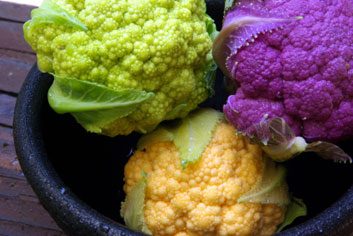
3. Cauliflower
Cauliflower is one of the cruciferous vegetables, which are rich in antioxidants that protect against cancer and fight free radicals, says Quinn. It’s also an excellent source of vitamin C.
There are plenty of ways to enjoy this versatile veggie. Try it in soups, salads and stir-fries; cook it in a curry or chili; or eat it raw with low-fat dip.
Recipes to try:
• Cauliflower with Crispy Crumbs
• Broccoli, Cauliflower and Leek Soup
• Dairy-Free Creamy Macaroni Bake
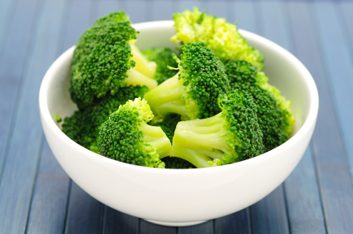
4. Broccoli
Broccoli is another superstar from the cruciferous family. “It’s been in the spotlight for being high in calcium, iron, folic acid and vitamin C,” says Quinn.
Try broccoli in everything from breakfast omelettes and wraps to salads, soups and stir-fries. Quinn suggests shredding broccoli to make coleslaw; mix it with low-fat mayo and dried cranberries or raisins.
Recipes to try:
• Immune-Boost Broccoli Soup
• Indian Chicken and Broccoli Wrap
• Spicy Garlic Vegetable Stir-fry
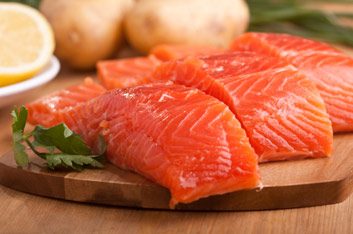
5. Salmon
Salmon is rich in omega-3 fats, specifically EPA and DHA, which help prevent heart disease and reduce inflammation. Unfortunately, Canadians are only getting half of the omega-3 fats they need. “It’s not something we naturally get-we don’t produce it, so we have to get it through diet,” says Quinn. Canned salmon with bones is a good source of calcium.
Health Canada recommends eating 150 grams (about one cup) of fish per week. Try barbecued salmon steak, or whip canned salmon into burgers or fish cakes. Add salmon to salads and chowders, or make smoked-salmon sushi rolls.
Recipes to try:
• Maple Baked Salmon with Chopped Almonds
• Sweet Potato Salmon Cakes
• Salmon Chowder
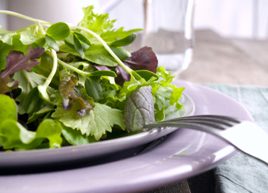
6. Leafy greens
Dark leafy greens are high on dietitians’ honour roll, and for good reason. “They tend to be high in iron, vitamin K, antioxidants, potassium and folic acid,” says Quinn. “There’s also a lot of versatility to some of these leafy greens that other salad greens don’t offer. Replace your romaine and use spinach more in your sandwiches, because you’re not getting the same nutrients.”
Canada’s Food Guide recommends eating one dark green vegetable daily. Try spinach in salads, wraps, chicken Florentine and quiche. Sauté kale or Swiss chard or add greens to soups, stews and pasta sauces.
Recipes to try:
• Warm Sweet Potato and Kale Salad
• Spinach Guacamole Quesadillas
• Corn and Swiss Chard Sauté
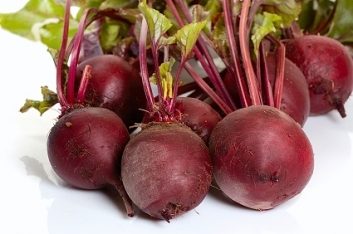
7. Beets
Beets are high in iron, vitamin C, folic acid and disease-fighting antioxidants, says Quinn. They also contain potassium, which helps normalize blood pressure. Also, in a recent American study, participants who drank beet juice experienced improved blood flow to their brains.
Try grated raw beets in salad or sliced pickled beets as a burger topping. You can also eat the leafy green part of the plant, much like spinach, says Quinn-chop it up and cook it with onions.
Recipes to try:
• Orange, Roasted Beet and Arugula Salad
• Beet and Tarragon Fusilli
• Roasted Beet & Beef Salad with Mustard Dressing

8. Flaxseeds
If you don’t like (or can’t eat) cold-water fish such as salmon and trout, Quinn suggests getting your omega-3s from flaxseeds or their oil. They contain a type of omega-3 fat called ALA, which combats inflammation. Even if you do eat fish, try flax for variety and for its tasty, nutty flavour (you’ll also benefit from both soluble and insoluble fibre).
You can add flaxseeds (ground or as an oil) to many foods you already enjoy, such as cereal, bread, smoothies and yogurt. Ground flaxseeds can go bad quickly, so grind as needed in a blender or spice grinder and store in an airtight jar in the refrigerator.
Recipes to try:
• Fibre-Boosting Chocolate-Chip Banana Bread
• Coleslaw
• Beef Burritos
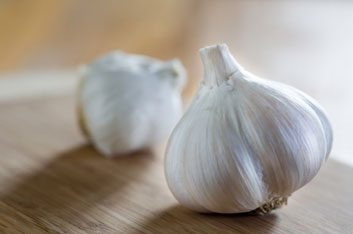
9. Garlic
Garlic is more than just a flavour booster. It’s loaded with antioxidants, gives your immune system a boost, helps prevent high cholesterol and high blood pressure and may slow the progression of cardiovascular disease. Studies have shown that people who consume more garlic are less likely to develop certain types of cancer. Research also shows it can help prevent and treat colds.
Quinn suggests sticking to the actual food rather than taking “odourless” pills, since the good-for-you enzymes are the source of that powerful scent. Try different prep methods-chopping releases more enzymes and makes the flavour more bitter, while roasting makes garlic sweeter. Then try it in soups, omelettes, spreads and your favourite dinner entrees.
Recipes to try:
• Garlic Mashed Potatoes and Grilled Garlic Shrimp
• Roasted Tomatoes with Garlic and Herbs
• Tomato-Garlic Soup
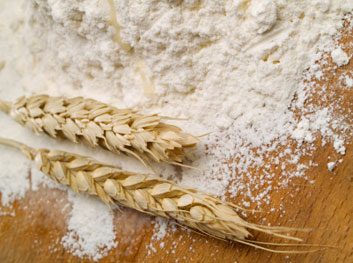
10. Ancient and alternative grains
As their name implies, ancient grains have been around for millennia, but it’s only recently that they’ve found their way into the mainstream North American diet (now they’re even trendy at upscale restaurants). Grains such as amaranth, kamut, quinoa, buckwheat and spelt vary in taste and texture, but generally have more protein and fibre than wheat. Quinoa, for example, which is actually a seed, has up to 50 percent more protein than common grains, and also more calcium, B vitamins and iron.
Ancient grains are whole grains, which help reduce the risks of heart disease, certain cancers and type 2 diabetes-no wonder Canada’s Food Guide recommends that half of our daily grain servings come from whole grains. And, for people who can’t tolerate gluten, ancient grains offer variety-many are lower in gluten or gluten-free.
Try quinoa tonight in a salad or stew, or serve pancakes with spelt flour for a healthy brunch.
Recipes to try:
• Vegetarian Quinoa Stew
• Apple-Walnut Pancakes with Spelt
• Scallops with Noodles and Ginger
Related:
• 9 superfoods to rev up your workout
• 5 trendy superfoods: Are they worth the cash?
• 5 reasons to eat more berries
